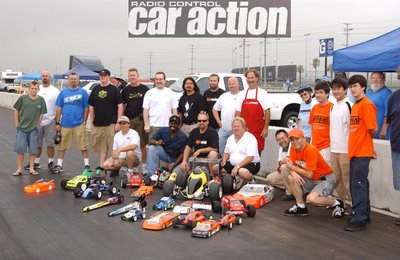

No $1000 CPUs. No dual $500 graphics cards. No insanely high or ridiculously low graphics settings. No timedemos. This time we take a typical mass-market system and play games normally to find the fastest processor.
About a year ago, we ran a feature called the Real Gaming Challenge. In it, we built a couple PCs using processors that typical PC users can afford, and measured their performance in games using a different methodology—real gameplay, instead of canned, recorded demo playbacks. Now, with the availability of new dual-core Athlon 64 CPUs and Core 2 Duo processors from Intel—both with very aggressive pricing—it's time for a rematch.
The New Winner: Core 2 DuoWhen we ran our first Real Gaming Challenge almost a year ago, we used CPUs that were about $80 cheaper, and single-core. Though the price of the tested CPUs has gone up, they're still quite affordable, and they're a lot faster. It has quickly become a dual-core world, and Intel's introduction of a whole new processor architecture has made a huge difference. Though the games are more demanding this year, tables have turned completely, with the Core 2 Duo now winning every single test against the comparable Athlon 64 X2—the exact reverse of last year.
When you consider all six games, the winner becomes abundantly clear. There's not a single game where the Core 2 Duo didn't deliver a higher average frame rate. Across all games, Intel's new CPU delivered a 16% higher frame rate. What is more important is that it spent a significantly smaller amount of time beneath our arbitrary thresholds for a really smooth and enjoyable gameplay experience. In fact, there are three games—half of our sample group!—where the Core 2 Duo essentially never dipped below the minimum threshold at all.
The real winner here is the consumer. You don't need to spend several thousand dollars on hardware to make a great gaming system. At 1280x1024—the most common LCD resolution and 40% higher-res than 720p high definition—you can have a really awesome time gaming with a single sub-$300 graphics card and a CPU just over $300. And you don't need to reduce the game's detail levels to do it; we ran all these tests using each game's "high" setting. With such high-performance dual-core CPUs priced so aggressively, and with Vista coming out in the next year with a strong focus on improving PC gaming, the signs look good for PC game fans.
 "You’re looking at 708 streetable horsepower of twin-turbo, all-aluminum, 265ci, Buick V-6. Newly available blocks and heads from TA Performance and Ken Duttweiler’s turbo and EFI tuning magic make the Buick viable again—if you have the bucks. The intercoolers are top-mounted in this example to fit the sand-buggy package this build was going in."
"You’re looking at 708 streetable horsepower of twin-turbo, all-aluminum, 265ci, Buick V-6. Newly available blocks and heads from TA Performance and Ken Duttweiler’s turbo and EFI tuning magic make the Buick viable again—if you have the bucks. The intercoolers are top-mounted in this example to fit the sand-buggy package this build was going in." "This motor’s broad, flat torque curve should make any hot rodder one of turbocharging’s greatest boosters. But there’s always room for improvement: The dip in the torque curve is indicative of a restriction or loss of turbo efficiency. Improved turbos are on the way to bust through the 800hp door."
"This motor’s broad, flat torque curve should make any hot rodder one of turbocharging’s greatest boosters. But there’s always room for improvement: The dip in the torque curve is indicative of a restriction or loss of turbo efficiency. Improved turbos are on the way to bust through the 800hp door."
















